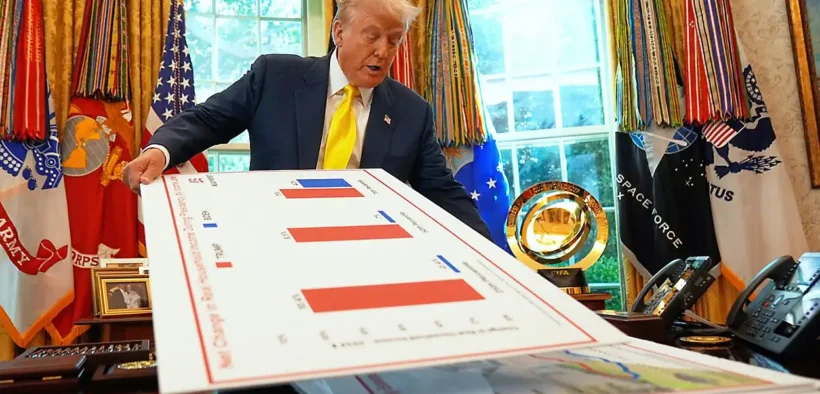U.S. GDP Climbs 3.3% in Second Quarter After Early-Year Slump
Share

After a shaky start to 2025, the U.S. economy has picked up speed again. New government figures show the country’s output grew at a healthy clip this spring, even as President Donald Trump’s trade battles continue to ripple through businesses and households.
The Commerce Department said the economy grew by 3.3% between April and June, much stronger than the 0.5% shrinkage in the first three months of the year. That early slump was the first in three years and was mostly triggered by Trump’s sweeping tariffs on imported goods.
Why the Numbers Changed
At the start of the year, many companies rushed to bring in foreign products before tariffs took effect. That surge in imports, which actually counts as a negative in economic growth calculations, pushed the first quarter into the red.
By spring, the opposite happened. Imports dropped by nearly 30%, lifting second-quarter growth by more than five percentage points. Put simply: once the rush was over, the math behind GDP made the economy look much stronger.
How Consumers and Businesses Are Feeling
For everyday Americans, the picture is more mixed. Consumer spending, the money households spend on everything from groceries to vacations, grew 1.6%. That’s better than the sluggish 0.5% seen earlier in the year, but still not a roaring comeback.
Businesses, on the other hand, were cautious. Private investment, spending on things like new factories, equipment, and inventory, plunged 13.8%, the biggest drop since the pandemic lockdowns in 2020. Much of that decline came from companies cutting back on stockpiles after filling their warehouses earlier in the year.
Government spending didn’t help either, falling by almost 5% for the second quarter in a row.
Since returning to office, President Trump has made tariffs the centerpiece of his economic strategy. Taxes on steel, aluminum, cars, and goods from almost every major trading partner are meant to protect U.S. factories and encourage companies to bring jobs home. Trump also argues tariffs will help pay for the tax cuts he signed into law this summer.
But many economists disagree. They point out that tariffs raise costs for U.S. businesses, which often pass them on to consumers through higher prices. That means families may end up footing the bill at the checkout line. And the unpredictable way tariffs are announced, delayed, or suddenly expanded has left businesses uncertain about whether to invest or hire.


















